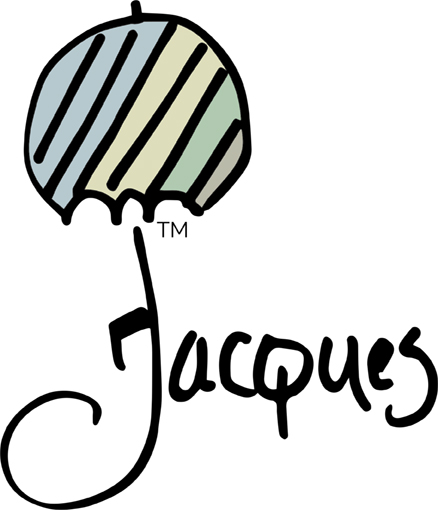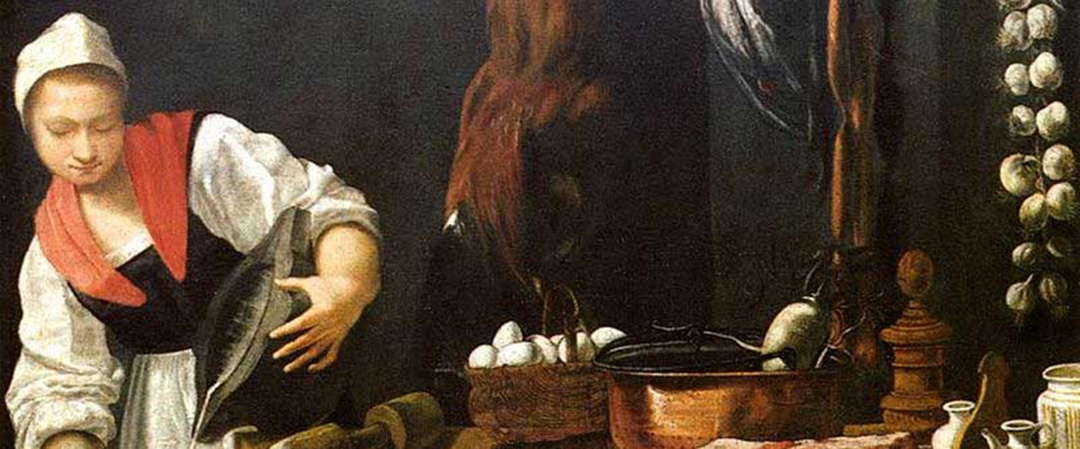“Cooking is like painting or writing a song. Just as there are only so many notes or colors, there are only so many flavors—it’s how you combine them that sets you apart.”
Wolfgang Puck
Inro text…
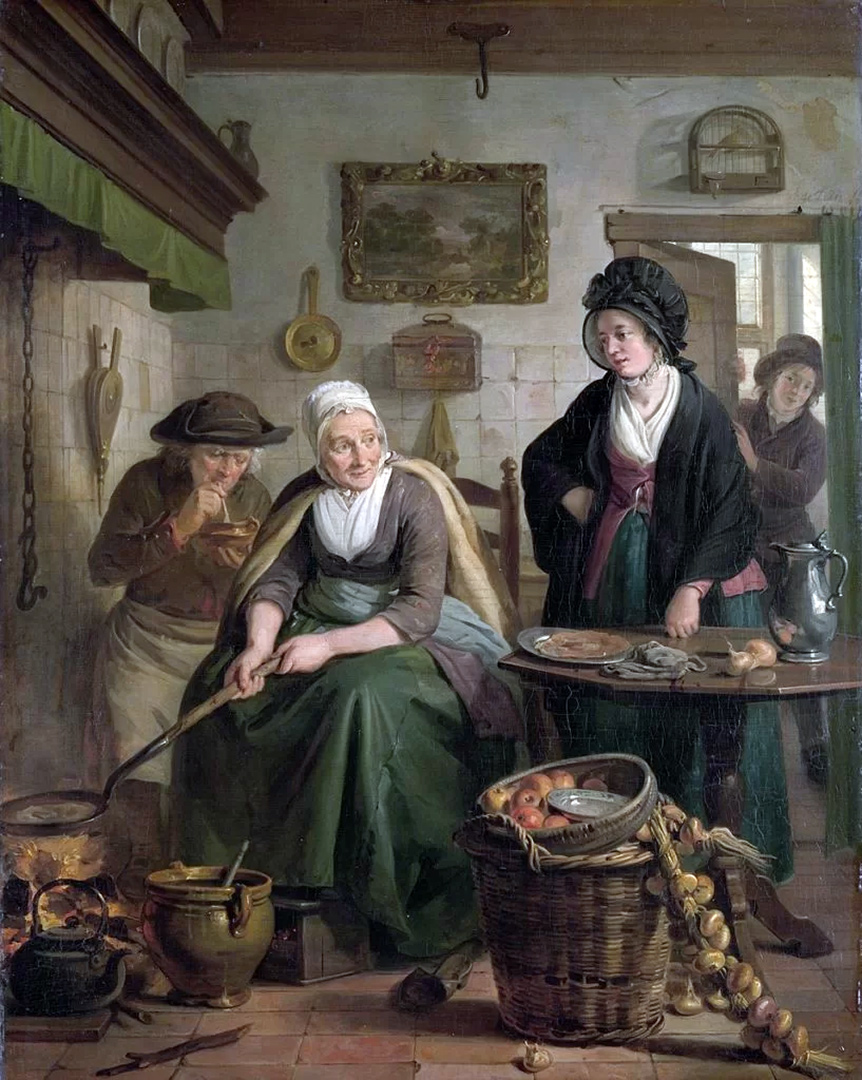 Daily Art: “Cooking in Pictures—The Food of Art and the Art of Food” [*]
Daily Art: “Cooking in Pictures—The Food of Art and the Art of Food” [*]
This is a comprehensive overview of food in art history (complete with examples for each of its 15 signets) and we highly recommend it if you’re at all interested in the topic of cooking in art history.
“Combining flavors in cooking is like combining pigments in art—a matter of flair and technique, but an internet search for “basic cooking techniques” renders upwards of 87,000 results. What are some of these basic cooking techniques that every home cook should master?
1. Sourcing the Best Ingredients: Movements like The Food Movement and Slow Food have underscored the importance of eating seasonally and locally, with as many fresh ingredients as possible.
[In refrence to painting shown] Pieter Aertsen portrays an incredible spread of produce in a market back in the 16th century. Aertsen is credited as being the first to paint monumental genre scenes, which combine still life and genre paintings and often include Biblical scenes in the background.
2. Basic Knife Skills: Much of cooking involves cutting, chopping, and peeling, so basic knife skills are a must. Here we see one of the potato peelers Van Gogh painted during the two years he lived in Nuenen. He really wanted to show his improvements in figure painting during this time, but also to portray hard-working people in their element.
3. Mise en Place: This is a French term that simply means “set in place” and refers to having everything prepared before beginning to cook. Mise en place helps by batching tasks in such a way that once the cooking process begins, it is not interrupted. The young lady in Andrea Commodi’s Kitchen Interior has gathered an interesting assortment of ingredients—what is she cooking?”*Quotation above is taken directly from the website cited and is the property of that source. It is meant to inform the reader and to give credit where it is due.
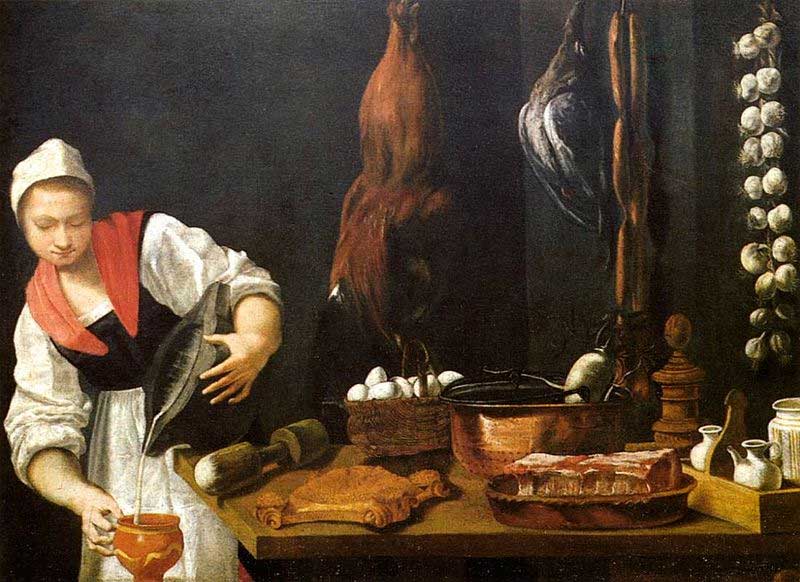 Smithsonian: “A Brief History of Food as Art” [*]
Smithsonian: “A Brief History of Food as Art” [*]
“Filippo Tommaso Marinetti was the first artist in the modern era to think of the preparation and consumption of food as art. The avant-garde Futurist movement, formed by Marinetti and other artists in Milan in 1909, embraced the industrial age and all things mechanical—from automobiles and planes to manufacturing methods and city planning. They thought cooking and dining, so central to everyone’s day-to-day lives, should also be central to their farsighted, far-out ideals.
In 1932, Marinetti published The Futurist Cookbook. It was not merely a set of recipes; it was a kind of manifesto. He cast food preparation and consumption as part of a new worldview, in which entertaining became avant-garde performance. The book prescribed the necessary elements for a perfect meal. Such dining had to feature originality, harmony, sculptural form, scent, music between courses, a combination of dishes, and variously flavored small canapés. The cook was to employ high-tech equipment to prepare the meal. Politics could not be discussed, and food had to be prepared in such a way that eating it did not require silverware.
Marinetti’s musings could not have predicted the role food would come to play in art nearly a century later. Contemporary artists have used food to make statements: political (especially feminist), economic, and social. They’ve opened restaurants as art projects, conducted performances in which food is prepared and served in galleries, and crafted elaborate sculptures from edible materials like chocolate and cheese. Horrifying as it might have seemed to Marinetti, some artists today even embrace food as a rejection of everyone and everything that is future-obsessed.”*Quotation above is taken directly from the website cited and is the property of that source. It is meant to inform the reader and to give credit where it is due.
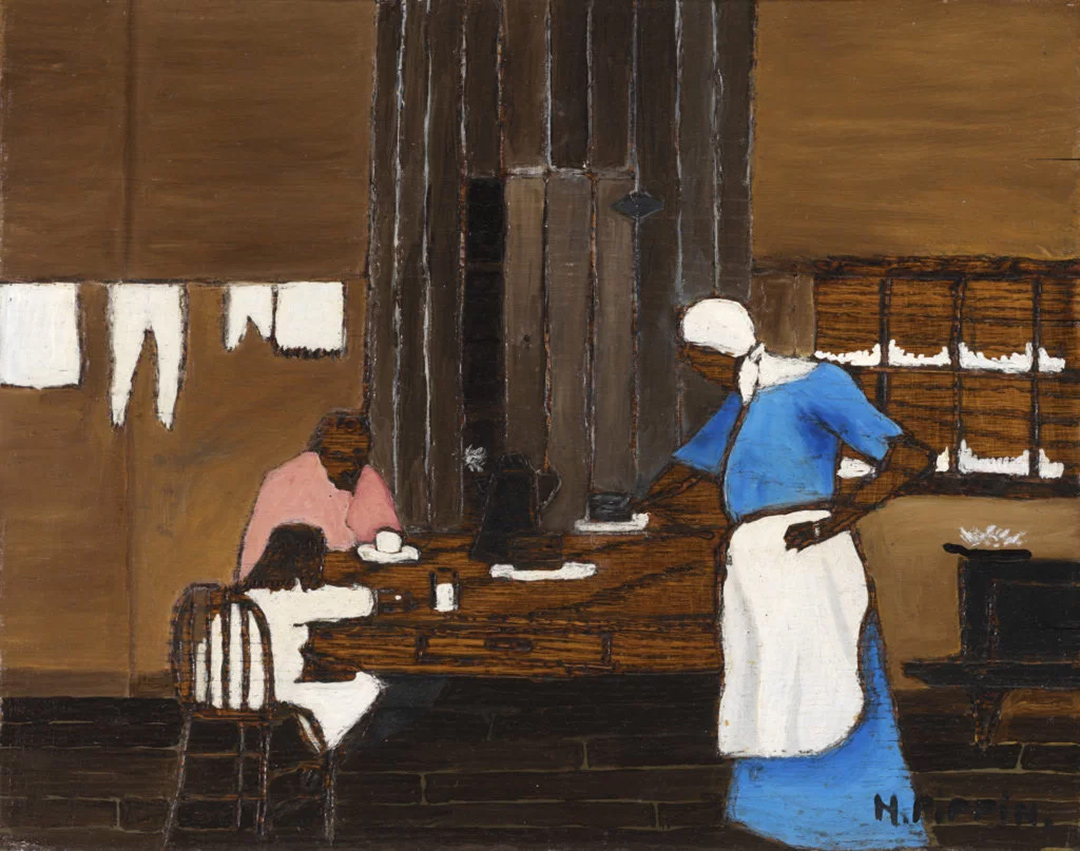 The Art Assignment: “Art Cooking” Featuring Videos of a Wide Range of Artists’ Relationships to Food From Van Gogh to Warhol! [*]
The Art Assignment: “Art Cooking” Featuring Videos of a Wide Range of Artists’ Relationships to Food From Van Gogh to Warhol! [*]
“Throughout history, food has served as subject matter, inspiration, and of course sustenance for artists. Food has also been the art on a number of occasions. With Art Cooking episodes, we playfully explore the life, art, and eating habits of some of artists you may or may not recognize. Get ready to follow along as we create a tower of crayfish to learn about Salvador Dalí, construct a meat tower to explore the bizarre cookery of the Italian Futurists, and mill our own flour to better know Georgia O’Keeffe’s singular approach to life and art. Fair warning: If you expect perfection in the kitchen, this series is not for you.”
*Quotation above is taken directly from the website cited and is the property of that source. It is meant to inform the reader and to give credit where it is due.
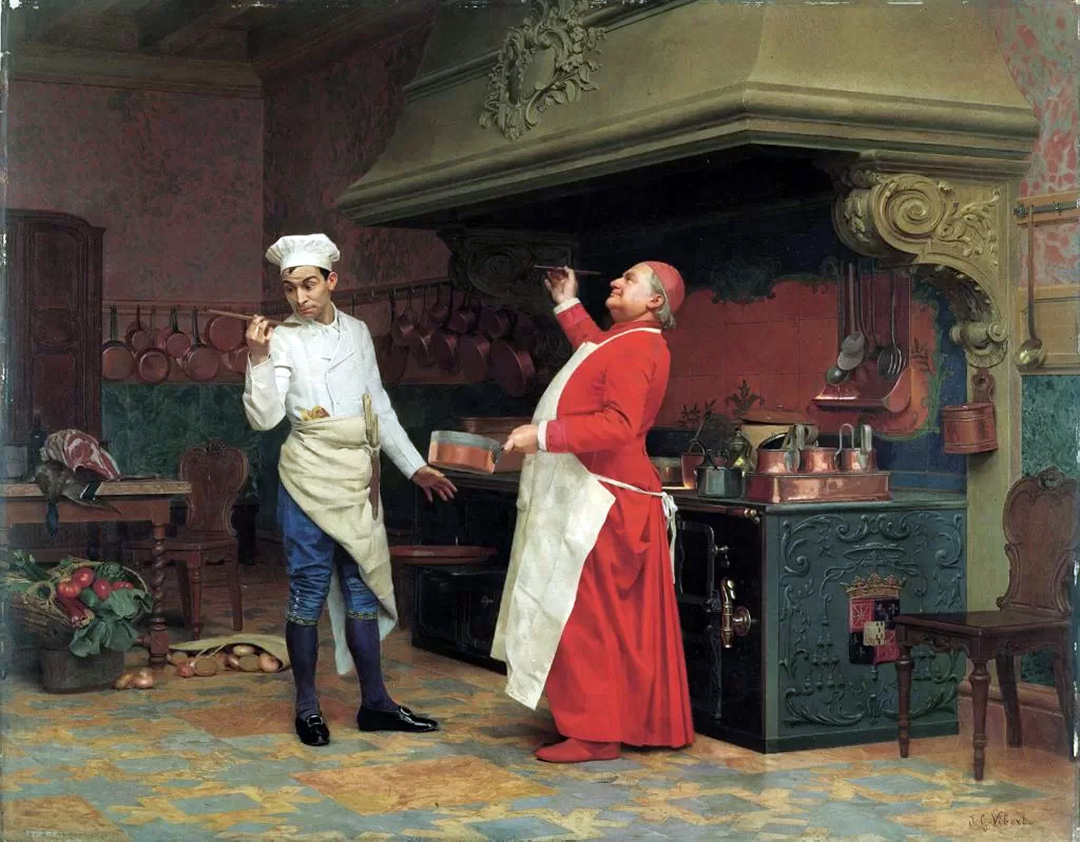 Wide Walls: “The Fascination with Food in Art History” [*]
Wide Walls: “The Fascination with Food in Art History” [*]
“As a cornerstone of our very existence, food has always played a significant part in our social and cultural lifestyles. Thus, it is no wonder that the depiction of food in art spans across cultures and all of recorded human history. Appearing in myriad contexts, this practice stretches back to ancient Greece and Rome where banquets and bacchanals were consuming passions celebrated in literature, painting, and mosaics. Drawings of food could also be found inside Egyptian pyramids. Created on inner walls of burial chambers and on coffins to depict all of the good things waiting for the deceased, it was believed that those drawings, through magical properties, would nourish those gone on to the afterlife. A recurring theme through the Middle Ages and Renaissance to modern times, food has been depicted as a celebration of a theme, composition itself or a metaphor. Whether serving symbolic purposes, being an allegory for certain virtues or values or emphasizing eroticism, exoticism or wealth, these food paintings were often used to reveal something else. Since food is interwoven with most aspects of our lives, this comestible art history also connects with larger themes such as politics, gender, religion, or class.”
*Quotation above is taken directly from the website cited and is the property of that source. It is meant to inform the reader and to give credit where it is due.
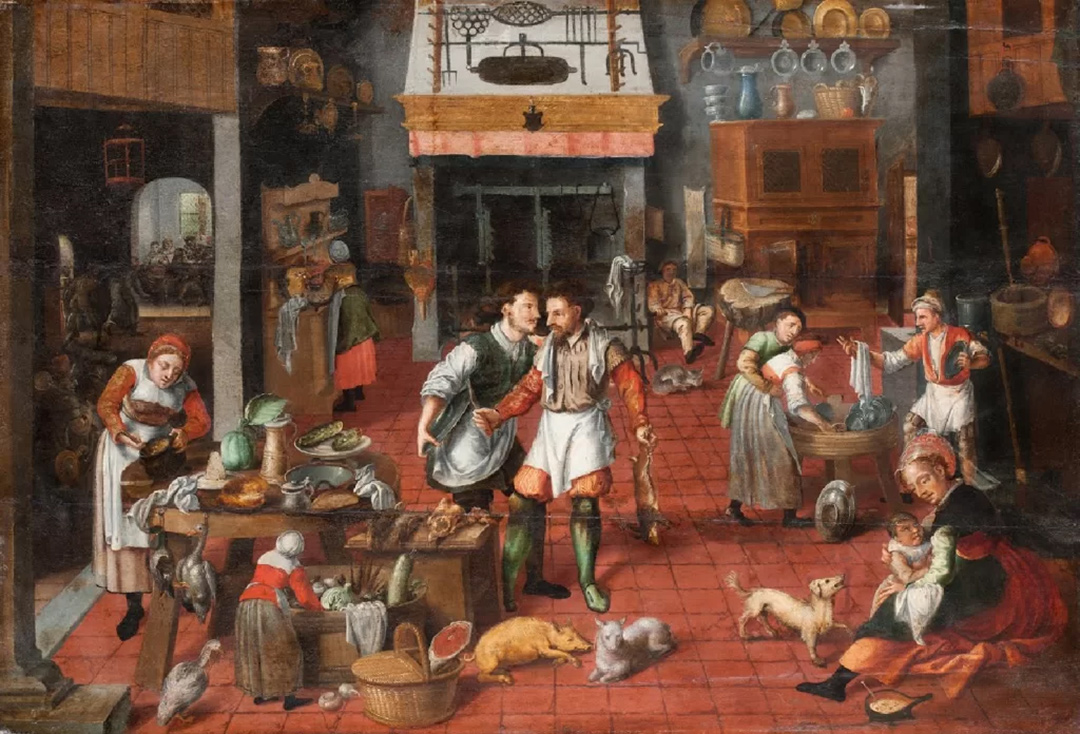 Daily Art: “Cook Like an Artist! Kitchen Inspiration from Art History” [*]
Daily Art: “Cook Like an Artist! Kitchen Inspiration from Art History” [*]
“For hundreds of years, kitchens in art were the undesirable work place of unsavory maids, tucked away below the luxurious living spaces of the upper class. During the mid-16th century, Northern Renaissance artists, such as Pieter Aertsen, began to change that. Aertsen and his contemporaries brought these minor people and places to the forefront of their work. While it took a few centuries for this type of genre painting to gain traction, we owe the Dutch and Flemish a high five in helping revolutionize the image of a household kitchen. Keep reading to see how kitchens in art history have changed through the years and maybe get a bit of inspiration from art history for that kitchen remodel you’ve been dreaming of!”
*Quotation above is taken directly from the website cited and is the property of that source. It is meant to inform the reader and to give credit where it is due.
Learn more on Daily Art.(with many works of art illustrating individual topics).
